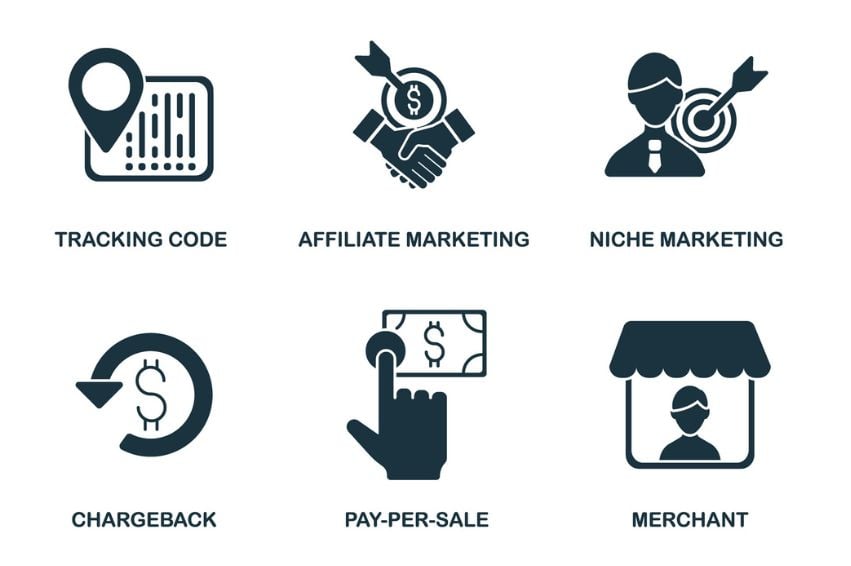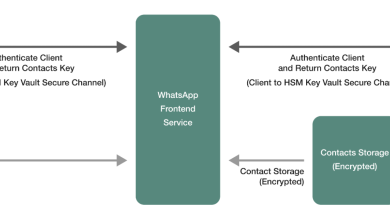How To Run A Successful Affiliate Program: 10 Practical Tips From Experts

Learning how to run an affiliate program can be an excellent way to promote your business, spread brand awareness, and attract new leads.
Studies show that 81% of brands are already using affiliate marketing strategies to drive sales. Plus, major brands earn up to 25% of all their sales through affiliate promotion. Of course, to get the right results from your affiliate marketing campaigns, you need the right strategy.
Launching an affiliate marketing program can seem like a daunting project. You need to not only find the right affiliates to work with, but decide which products they should promote, choose the best commission plan, and even train your teams.
Fortunately, we’ve gathered insights from the experts to provide you with 10 practical affiliate marketing tips, sure to make your program a success.
What is an Affiliate Program? The Basics
An affiliate program, or affiliate marketing program, is a promotional initiative in which a business or merchant pays another person to promote their company or products. Companies work alongside website owners, bloggers, influencers, vloggers, and streamers. These affiliates share tracked links, coupon codes, and vouchers with customers, encouraging them to buy certain products.
Whenever a customer uses one of these tracked links or codes to buy something, the merchant pays the affiliate a commission (often a fixed payment or a percentage of the purchase value).
Affiliate programs are a win-win for both companies and the partners they work with. Affiliates get an extra source of income, while companies benefit from more exposure and often an improved reputation. Working with the right affiliate can increase the credibility of your brand.
With a well-planned affiliate marketing program, business leaders can:
- Rapidly increase brand awareness and reach.
- Convert more customers (customers trust authority figures and their recommendations).
- Reliably track the ROI of word-of-mouth marketing and different promotional channels.
- Effectively target specific customer groups and segments.
- Grow your business without risk (you only pay an affiliate when they generate sales).
Is an Affiliate Marketing Program Right for Your Business?

While there are plenty of benefits to learning how to run an affiliate marketing program, it’s worth noting that this strategy isn’t right for every company. First, affiliate programs work better in some industries and niches than others.
According to one report, ecommerce businesses benefit most from affiliate programs (80%), followed by Beauty (77%), Apparel (68%), Tech (68%) and Health (61%) companies. Organizations that sell subscriptions are also ideal for affiliate marketing. Plenty of SaaS brands have their own affiliate marketing programs, from Shopify to Canva.
Aside from your niche and the products or services you sell, there are a few other factors that can influence how likely your affiliate program is to be a success. For instance, affiliate marketing programs work best when:
- You want to drive traffic to your own site or website. Affiliates don’t sell products on your behalf; they just direct customers to your company.
- Your business can offer a good compensation scheme. You need to be able to reward your partners for their efforts.
- Your product or service appeals to a wide audience, so it’s easier for affiliates from multiple landscapes to promote your solution.
- You have the bandwidth or capacity to manage a comprehensive affiliate marketing program (tracking results, creating content, and training partners).
- The product or service you sell is high value. The higher the price of your products, the more commissions affiliates can typically earn.
Affiliate marketing programs are also ideal if you already have high customer retention rates. If you can turn every customer your affiliate partners send your way into a lifelong brand advocate, you’ll earn significant revenue while only paying the affiliate once.
When to Choose Referral or Influencer Marketing Instead
Although affiliate, referral, and influencer marketing are all forms of “word of mouth” promotion, they’re not the same thing. Referral programs focus on activating your customers and convincing them to drive new leads to your business in exchange for rewards.
A referral program might be a good option if you can’t afford to pay cash commissions for every sale or your business is relatively new.
Alternatively, influencer marketing campaigns involve working with specific creators to build promotional campaigns and elevate your brand’s reputation. This method might be a good option for you if you want to improve your company’s credibility or authority.
Notably, you can choose to combine affiliate, referral, and influencer marketing – you’ll just need to ensure you have the right strategy in place for each program.
How to Run an Affiliate Marketing Program: 10 Tips for Success

Now you know what an affiliate marketing program is and which businesses it makes sense for, it’s time to start crafting your strategy. Here are our top, expert-backed affiliate marketing tips, guaranteed to improve your chances of success.
1. Set Clear Goals, KPIs, and Metrics
One of the biggest mistakes companies make when learning how to run an affiliate program is assuming they can jump in with vague goals. While the overall aim of your affiliate strategy might be to increase sales and traffic, you need to get more specific.
Answer the following questions:
- Which audience or segment do you want to reach?
- What kind of affiliates will you work with (bloggers, influencers, social media stars)?
- How much revenue do you expect to earn from affiliate marketing?
- How much can you afford to spend on commissions?
- How will you preserve your brand reputation (sharing brand guidelines, etc)?
For instance, HubSpot knows it wants to attract business owners to its website with its affiliate campaigns, and therefore, appeals to people with a strong professional brand and a following on channels like LinkedIn or their personal blogs.
Since it also wants to increase customer retention, it pays affiliates commissions when a customer renews their service, as well as when they sign up.
As well as setting clear goals, it’s worth thinking carefully about the metrics and KPIs you’re going to track. Are you going to be monitoring impressions as well as clicks? Engagement rates on social media, average order value, or conversion rates?
2. Analyze the Competition
Competitor analysis can be a valuable tool when you create any kind of marketing strategy. Looking at the affiliate programs of other companies in your niche can give you a lot of useful insights into everything from the kinds of commissions you should offer to which affiliates you should work with.
For example, if you were creating an affiliate program for your website design solution, you might look at the Elementor affiliate program. Affiliates get commissions worth 50% of every sale on this platform, indicating you’ll need to offer big rewards to attract the right partners.
When you’re analyzing your competitors, make a note of the following:
- What action triggers the payout of a commission? (sale, generated lead, impression, etc.)
- How are affiliates paid? (Is there a set reward, or a percentage-based commission?)
- Are affiliates paid in cash, credits, vouchers, or something else?
- How high is the commission rate, on average, for each brand?
- How does the company recruit affiliates? (through a landing page or marketplace?)
- How difficult is it for people to apply to become an affiliate?
- What are the terms and conditions of the affiliate program?
- What training and support does each brand provide?
- What kind of resources do the companies give to their affiliates? (blog templates, banners, etc.)
Once you’ve answered all of these questions, conduct a SWOT analysis. Examine the strengths and weaknesses of each program. Ask yourself what opportunities you could take advantage of and which threats you need to overcome. For instance, if you were competing with Elementor, you might not be able to match their 50% commission rate.
However, Elementor also has a minimum sales threshold of $200, which makes it harder for affiliates to earn money straight away. If you could eliminate that threshold for your affiliates, you could make your program more appealing.
3. Choose Your Affiliate Commission Carefully
When it comes to learning how to run an affiliate program, few things are more important than choosing the right commission. Ultimately, if the reward you offer your partners isn’t big enough, they’re going to abandon your business or promote other competitors instead.
Unfortunately, there’s no one-size-fits-all strategy for choosing the right commission plan. Some companies pay a single fee for every customer referred by an affiliate, while others pay them a percentage of the overall sales value.
You could even consider creating a tiered commission plan.
For instance, affiliates for AWeber earn a 30% commission for their first 10 referrals, 40% for their next 10, and 50% when they convert 50 people or more. Other things you’ll need to think about when choosing your commission strategy include:
- How will you pay affiliates? Will you send money straight to their bank account or to a mobile wallet like PayPal? How quickly will they earn money? Do you pay out once a month, weekly, or whenever a conversion happens?
- What will you give your affiliates? Will your partners earn actual cash for their referrals, or will you give them credit for your company or website?
- Will you offer any bonuses? Can you encourage your affiliates to go above and beyond by promising them extra bonuses if they meet certain revenue goals?
Your affiliate commission strategy should be informed by your competitor analysis, your knowledge of your customer acquisition costs, and your understanding of your customer’s lifetime value.
4. Use an Affiliate Marketing Platform
One of the toughest things about running an affiliate program is keeping track of everything. As your business grows and you work with new affiliates, it can be difficult to accurately monitor everything from the number of sales they generate to their most valuable campaigns.
Plus, it’s often difficult to ensure you’re constantly paying your affiliates according to the right schedule to maintain their loyalty. An affiliate marketing platform can help with this. Tools like Upfluence, UpPromote, and Trackdesk offer access to a range of tools that make your life easier.
They can help you create customizable registration forms and affiliate links for your partners. They also integrate with payment processing tools like PayPal and allow you to set up automated payment processes. Plus, they can give you a behind-the-scenes insight into your affiliate’s performance and the metrics you need to monitor throughout campaigns.
Some tools can even help you calculate the right commission strategy for your affiliates, based on your customer’s average order value and lifetime value.
5. Choose the Right Products for Your Program

This is one of the most important affiliate marketing tips for any beginner: don’t just ask your affiliates to promote every product you have. Unless you only have one or two products on offer, it’s better to ensure you’re choosing the right items for your program.
Ideally, the products you choose for your affiliate program should have a high average order value, as this will allow your affiliates to earn more revenue. For instance, if you give your partners a 10% commission for everything they sell, they’ll earn a lot more from a product worth $100 than one worth $5. It’s also worth remembering not every product is suitable for affiliate campaigns.
If you sell a complex “custom” product or service, then there’s a good chance your customers will need to speak to your sales team before they make a purchase. In this case, it can be difficult to determine how much of a sale actually comes from an affiliate and how much can be attributed to the partners you’re working with.
When you choose products for your program, look for ways to make them as enticing as possible for your customers (to help increase sales). For instance, you could offer free shipping on orders over a certain value or give first-time buyers a discount.
6. Outline Your Program Policy and Structure
Affiliate programs often seem simple enough on the surface. Your affiliate promotes your product or brand, and you pay them every time they generate a sale. However, there are a lot more moving parts involved than you might think. For instance, you need to decide:
- Which platforms your affiliates use: Are you going to ask your affiliates to promote your products through their blog or website or specific social media channels like TikTok? How will you track which platform has the best ROI?
- What rules your affiliates need to follow: Do you have specific brand guidelines to help your affiliates speak accurately about your brand and products? Are there any terms they should avoid using or strategies they need to think about?
- How you’ll monitor affiliate results: Will you be using UTM tracking links to attribute specific sales to each affiliate, or unique promotional codes? How long will affiliate cookies be active? (how long are they eligible to earn a commission after someone clicks a link?)
- How you’ll manage the program? Will you have a dedicated affiliate program manager responsible for communicating with affiliates and providing training? How will you respond to affiliates who have challenges or problems?
- What resources will you give your affiliates? Can you provide access to templates, social media marketing tools, coupons, discounts, or other materials? Can you provide comprehensive training, webinars, and videos to help boost your partner’s success?
7. Create Incredible Affiliate Marketing Collateral
Many of the affiliates you work with will already have their own tools, resources, and skills that can help them achieve success with your campaign. For instance, if you’re working with social media influencers, they’ll already have scheduling tools, and reporting tools they can use to learn about their target audience and optimize their campaigns.
However, creating additional collateral for your teams can be extremely beneficial. The resources you give your affiliates show them that you’re committed to giving them the best chance of success online, which means they’ll be more loyal to your brand.
Plus, giving your affiliates the right resources means their campaigns are more likely to be successful, so you end up with more sales. Some of the collateral you create for affiliates might include:
- Ready-made blog posts and reviews
- Email templates
- Banners for their website
- Marketing resources for new products and announcements
- Brand guidelines and editorial guidelines
8. Use a Range of Resources to Find Affiliates
For most companies learning how to run an affiliate program, tracking down the right affiliates can be one of the most challenging steps. The best way to ensure you connect with a broad range of professionals is to use a variety of resources, such as:
- Social media: Look for influencers, thought leaders and innovators connected to your industry who might be willing to promote your products. Check out the people competing companies in your industry are working with for inspiration.
- Your website: Use your website to attract and convert affiliates for your brand. Create a landing page outlining the details of your affiliate program, as Brevo does here, and make it easy for people to sign up or apply to work with your brand.
- Affiliate networks: Affiliate networks are a great resource for finding experienced affiliates in your niche. Consider options like ShareASale or Rakuten Advertising. These networks are extremely easy to use and often come with extra resources for things like training.
You could also consider reaching out to people you want to work with directly. Some popular bloggers include details on their contact pages for businesses who want to form partnerships with them. Just make sure you know whether you’re requesting an affiliate or influencer partnership.
9. Choose the Right Affiliates
This is one of the top affiliate marketing tips many beginners overlook. Although having as many affiliates promoting your products as possible might seem like a good idea, it’s important to remember that some people will be more valuable to your brand than others.
Your affiliates and their reputation have a direct impact on your brand equity. If people who are seen as low-quality or untrustworthy promote your brand, this could damage your reputation.
It’s also worth noting that the more influencers you have, the more difficult your campaign will be to manage. Focusing on attracting people who can have a genuine impact on your sales and growth will make your program less complex and more successful.
Consider creating an ideal “affiliate” profile, covering everything from how many followers they should have on social media, how reputable they should be, and how much experience they need with your industry or niche.
10. Track Your Results and Optimize
Finally, with any marketing or business growth strategy, you should always be looking for ways to optimize and improve. The same rules apply to your affiliate program. If you’ve followed the steps above, you should already have an idea of the metrics you need to monitor, how you’re going to track success, and which tools you’re going to use.
Don’t just pay attention to the results your affiliates are getting once or twice a year. Constantly monitor your top affiliates, their results, and the outcomes of their campaigns. Communicate your findings with your affiliates, and give them tips on how they can improve.
For instance, if you notice that your affiliates get the best results when promoting your products on YouTube, share this information with the rest of your team. Give them video templates to follow and advice about YouTube SEO.
Work collaboratively with your influencers to constantly elevate their results and improve the ROI of your program.
Mastering Affiliate Marketing Programs

Learning how to run an affiliate program might seem like a daunting prospect. There are definitely a lot of factors to consider and moving parts to manage. However, if you can create and implement the right program, the results can be phenomenal.
With the affiliate marketing tips above, you should have all the information you need to start boosting your growth with affiliate campaigns.
Of course, if you need a little extra help, you can always reach out to Toptal to be paired with a freelance affiliate marketing expert who can optimize and transform your strategy.



